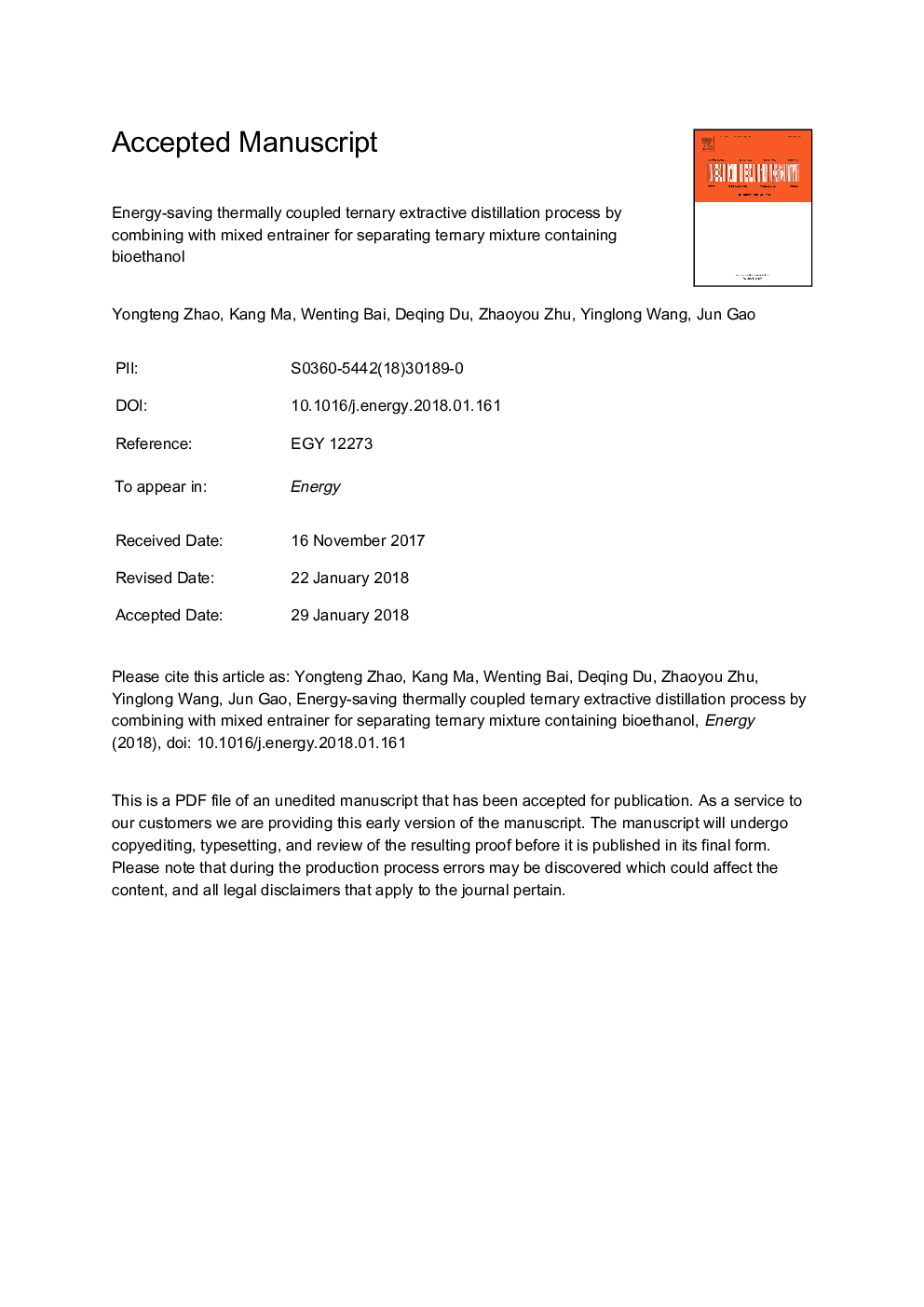| Article ID | Journal | Published Year | Pages | File Type |
|---|---|---|---|---|
| 8071999 | Energy | 2018 | 33 Pages |
Abstract
The major intrinsic obstacle of extractive distillation is the high energy consumption. It is an actual problem for reducing energy consumption of extractive distillation processes. Two thermally coupled ternary extractive distillation processes were studied to separate the ternary azeotropic mixture tetrahydrofuran/ethanol/water using a single component solvent (dimethyl sulfoxide) and a mixed solvent (dimethyl sulfoxide and ethylene glycol) as entrainer. The optimal conditions of all ternary extractive distillation processes were obtained based on the minimal total annual cost. Thermodynamic efficiency and CO2 emissions index were also considered to evaluate the energy efficiency and environmental impact of alternative ternary extractive distillation processes. The results show that the use of mixed entrainer can result in reduction in both energy consumption and total annual cost for the same ternary extractive distillation configuration. Comparisons of the conventional ternary extractive distillation process and thermally coupled ternary extractive distillation process 1 (combining extractive distillation column with entrainer-recovery column) with mixed entrainer show that a thermally coupled extractive distillation sequence with a side rectifier present the best results. However, thermally coupled ternary extractive distillation process 2 (combining extractive distillation column with entrainer-recovery column) does not show good result due to existence of remixing effect.
Related Topics
Physical Sciences and Engineering
Energy
Energy (General)
Authors
Yongteng Zhao, Kang Ma, Wenting Bai, Deqing Du, Zhaoyou Zhu, Yinglong Wang, Jun Gao,
